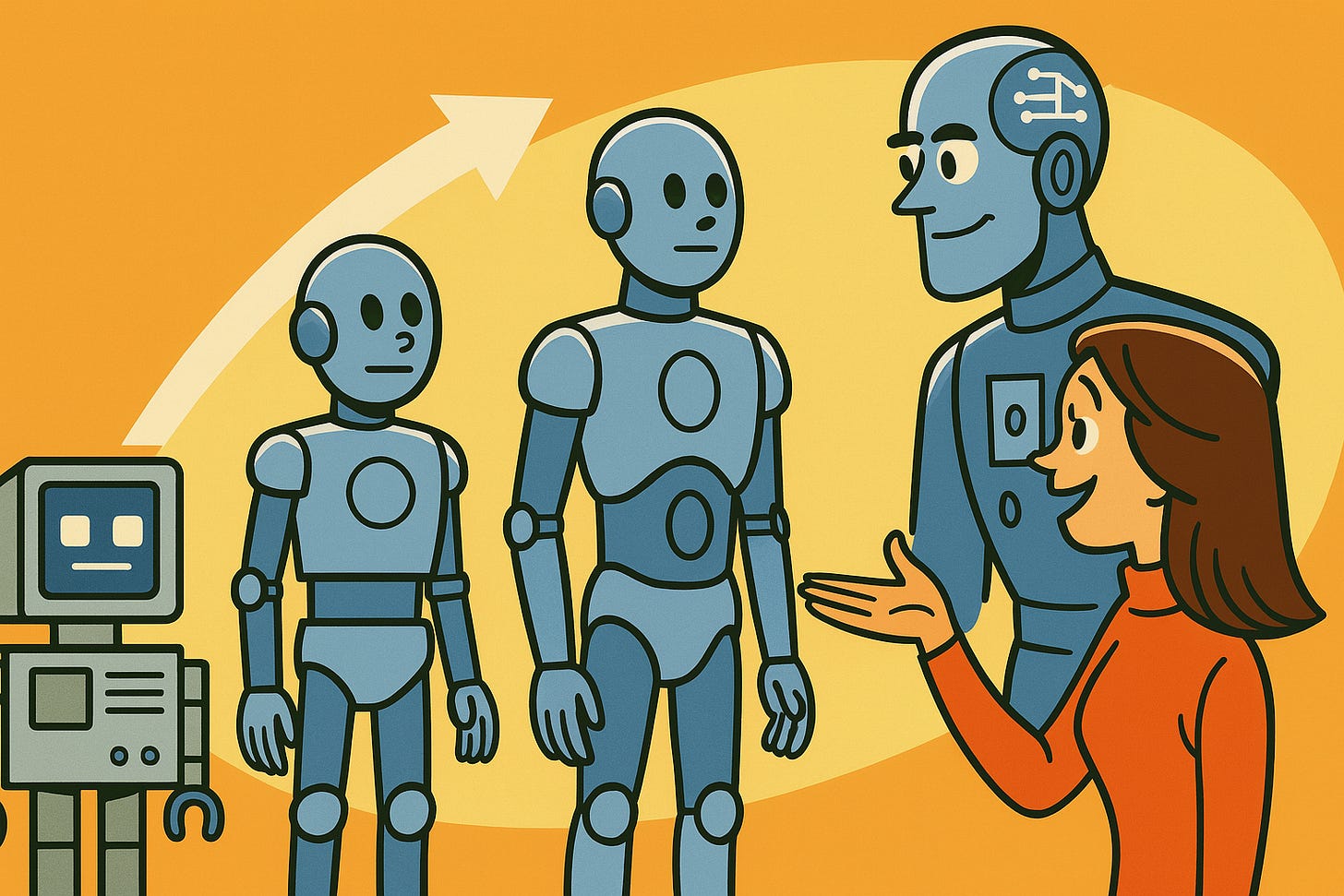The Great AI Diversification: Lessons from Life’s Greatest Innovation Sprint
With all the hype surrounding AI, I found myself nodding throughout Narayanan and Kapoor’s great analysis in AI as Normal Technology, as the piece lays out a more measured approach in thinking about the transformation that has begun. Their argument that AI will follow predictable diffusion patterns rather than achieving sudden superintelligence feels remarkably similar to another transformative period that I’ve been writing about, the Cambrian Explosion.
Key Research Insight
The authors critically dismantle the superintelligence narrative by examining how AI methods, applications, and adoption operate on different timescales. Their key insight—that diffusion in safety-critical areas remains slow despite rapid capability advancement—mirrors how the Cambrian explosion worked: rapid innovation in basic “technologies” (genetic and morphological), but careful, gradual development of sustainable life strategies.
The paper’s distinction between invention (new AI methods), innovation (applications), and diffusion (organizational adoption) creates a framework that explains why transformative technologies consistently take decades to reach full impact.
Cambrian Parallels: The Innovation Explosion Model
The Cambrian explosion (roughly 540-515 million years ago) represents life’s most dramatic diversification event. In a relatively short geological time, almost every major animal phylum appeared. However, this “explosion” still took millions of years, and success required solving complex integration challenges.
This provides a perfect analogy for our current AI moment:
Rapid Capability Development: Like the emergence of complex sensory systems and hard shells in the Cambrian, AI capabilities are advancing quickly. Large language models, computer vision, and autonomous systems represent fundamental “biological innovations.”
Experimental Applications: Cambrian life forms experimented with countless body plans and survival strategies. Similarly, we’re seeing AI applications attempted across every conceivable domain—from content generation to medical diagnosis to customer service automation.
Selective Pressure Through Adoption: Just as environmental pressures determined which Cambrian innovations survived, market forces and regulatory requirements will determine which AI applications achieve sustainable adoption.
The Diffusion Challenge: From Lab to Ecosystem
The authors’ analysis of diffusion speed limits perfectly parallels evolutionary constraints. The examples that they lay out in the article—where the system learned from “future” data—mirrors how Cambrian organisms that developed without proper environmental integration failed to survive.
Successful Cambrian species developed symbiotic relationships and adaptive mechanisms. Similarly, successful AI applications require integration with existing business processes, regulatory compliance, and organizational change management.
Strategic Implications for Customer Experience Leaders
A normal AI evolution, when compared to the Cambrian model, could follow similar phases of transformation for Customer Experience:
Phase 1 - Experimental Diversity (Current): Like early Cambrian life forms, AI applications are rapidly diversifying. Customer Service leaders should pilot multiple approaches while maintaining operational stability. Focus on low-risk, high-learning opportunities. It’s also important to remember that the interface (UI) will likely be the most attractive capability, but is also the most likely to change. Beginning with a direct focus on how AI can optimize what you already have is probably the best place to begin.
Phase 2 - Selective Adaptation (Next 5-7 years): Market pressures will eliminate ineffective solutions while strengthening successful ones. Invest in infrastructure that reduces downstream burdens that legacy integration, and data strategies are built on. Like the Cambrian, this ‘explosion’ will be uneven in technological hurdles, but building an organizational learning that rewards iteration will be a major factor in long term success. Develop robust testing and monitoring systems.
Phase 3 - Ecosystem Maturity (7-15 years): Successful AI patterns will establish stable “evolutionary niches” within Customer Experience operations. From the customer’s perspective, engaging with organizations that remove friction along the customer journey has always been important. In an iterative and evolutionary normalization of AI, weaving together the evolutionary niches to created a robust and sustainable ecosystem will be the ‘killer app’ of the future. Focus will shift from experimentation to optimization and scaling.
The Control Evolution Advantage
The authors’ emphasis on human control mechanisms aligns perfectly with how successful Cambrian organisms developed sophisticated sensory and response systems. Customer Service organizations that build strong AI monitoring, auditing, and escalation capabilities will have significant competitive advantages.
Rather than viewing AI as replacing human judgment, the Cambrian model suggests AI will augment human capabilities while humans evolve new roles in system oversight and strategic direction.
Bottom Line
The Cambrian explosion created the foundational body plans that enabled all subsequent evolutionary innovation. We’re likely in an AI Cambrian moment—establishing the fundamental patterns that will define technology integration for decades.
The winning strategy isn’t to bet on specific application of AI, but to build organizational capabilities that can adapt and evolve as the AI ecosystem matures. Like successful Cambrian species, the Customer Experience organizations that thrive will be those that develop robust sensing, adaptation, and integration mechanisms.
Read AI as Normal Technology from the Knight First Amendment Institute here.


